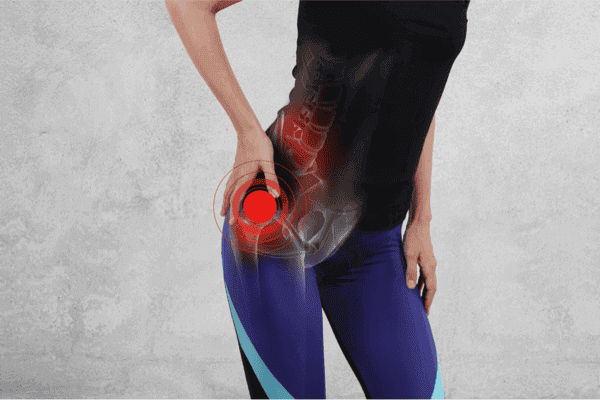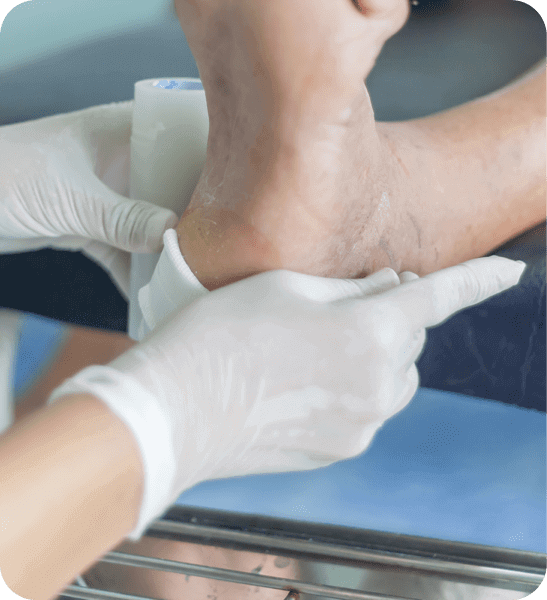Radiation Damage to the Abdomen

How Hyperbarics Helps
Reduces late-onset radiation injuries to the head/neck, bone, prostate, and bladder.
Prevents osteoradionecrosis after exodontia in irradiated areas.
Increases the efficacy of radiation therapy for head/neck tumors and high-grade gliomas.
Significantly improves pain, symptoms, and quality of life in breast cancer patients with radiation toxicities.
Provides clinical benefit for over 50% of patients with radiation-induced hemorrhagic cystitis.
What the Research Says
HBOT Emerges as Promising Therapy for Mitigating Radiation Toxicities and Enhancing Radiotherapy Outcomes
Radiation therapy directed at abdominal tumors saves lives. It can, in some cases, also lead to tissue damage and dysfunction, including enteritis (intestinal inflammation), proctitis (rectal inflammation), cystitis (bladder irritation), fibrosis (tissue scarring), and vascular injury. These radiation-induced injuries can manifest as debilitating gastrointestinal, genitourinary, and musculoskeletal complications, such as pain, bleeding, diarrhea, incontinence, and bowel obstruction, that can persist long after the initial radiation treatment.
There is growing evidence for the therapeutic benefits of hyperbaric oxygen therapy (HBOT) in managing radiation-induced complications and optimizing radiotherapy efficacy across different cancer types. A bibliographic review found Grade B/C evidence that HBOT can reduce late-onset radiation injuries, prevent osteoradionecrosis, and improve outcomes in head/neck tumors and high-grade gliomas (Fernandez, et al, 2021). A large retrospective study in breast cancer patients demonstrated HBOT significantly improved pain, symptoms, and quality of life measures, with low rates of moderate/severe side effects. Additionally, a small study showed HBOT provided clinical benefit in over half of patients with radiation-induced hemorrhagic cystitis. These collective findings support the use of HBOT as a valuable management strategy for clinicians treating radiation-related complications and optimizing radiotherapy for their cancer patients.
Research Studies
HBOT Demonstrates Efficacy in Mitigating Radiation-Induced Toxicities and Enhancing Radiotherapy Outcomes
HBOT Demonstrates Efficacy in Mitigating Radiation-Induced Toxicities and Enhancing Radiotherapy Outcomes
HBOT Improves Symptoms and Quality of Life in Breast Cancer Patients with Radiation-Induced Toxicities
HBOT Improves Symptoms and Quality of Life in Breast Cancer Patients with Radiation-Induced Toxicities
THE EFFICACY OF HYPERBARIC OXYGEN THERAPY IN THE TREATMENT OF RADIATION-INDUCED LATE SIDE EFFECTS
THE EFFICACY OF HYPERBARIC OXYGEN THERAPY IN THE TREATMENT OF RADIATION-INDUCED LATE SIDE EFFECTS
Patient Experiences
-

Lisa, 44
After seven years of suffering, hyperbaric oxygen therapy healed her osteomyelitis.
Lisa St John, the clinic director for Bay Area Hyperbarics, had chronic refractory osteomyelitis that lasted seven years with no relief. The infection induced severe fatigue and cognitive impairment that prevented her from working, and required her to sleep up to 18 hours per day. Finally, a physician recommended hyperbaric oxygen therapy with antibiotics, which after 60 treatments, healed her. Shortly after being healed, she sold her home to begin her first hyperbaric oxygen therapy clinic, which she has owned for almost 25 years!
-

Jennifer, 68
Hyperbaric oxygen therapy eliminated the need for surgery to heal her bone infection.
Jennifer had osteomyelitis of the lower jaw (mandible), which proved difficult to heal. Her teeth were becoming loose, and her doctor thought she would need surgery. However, he prescribed hyperbaric oxygen therapy before the surgery, and after 60 treatments, her chronic refractory osteomyelitis healed completely, regrowing bone in her mandible. Jennifer was able to keep her teeth, and was able to return to her active lifestyle, hiking regularly with her husband.
Physicians: Refer a Patient
You Submit Your Patient’s Information
We Get Authorizations
Patient Starts HBOT

Related Articles
Research on Hyperbaric Oxygen Therapy
-
What is Hyperbaric Oxygen Therapy?
Hyperbaric oxygen therapy treats medical conditions with 100% oxygen in a pressurized hyperbaric chamber. The patient lies or sits in the chamber. The oxygen then saturates the plasma in the blood, allowing oxygen to easily flow throughout the body and reach even areas that are injured or diseased, which typically receive less oxygen. The mechanisms of hyperbaric oxygen therapy include stimulating and mobilizing stem cells, down-regulating inflammatory genes, up-regulating reproductive cells and stimulating DNA. HBOT also regrows tiny blood vessels, and stimulates the growth of new healthy cells in the brain, bones, skin, organs, and tissues. People seek hyperbaric oxygen therapy to heal physical damage in their bodies and to promoting health and anti-aging.
-
Does HBOT kill cancer cells?
Current research indicates that hyperbaric oxygen does not kill cancer cells. However, there has been a small amount of research indicating that hyperbaric oxygen might reduce the size of certain tumors. Also, there has been a study on mice using hyperbaric oxygen, along with a ketogenic diet, to reduce tumors. Hyperbaric oxygen causes many different healing modalities to kick into gear. Could its effect on strengthening the immune system inhibit the growth of cancer cells? Nobody knows. There are numerous studies conclusively showing that hyperbaric oxygen does not encourage cancer cells or tumors to grow. Some patients claim the hyperbaric oxygen makes them feel a lot more comfortable and functional after chemotherapy and also during healing. Note that some chemotherapy drugs are not to be used with hyperbaric oxygen, as the chemotherapy drugs can be enhanced and thus become toxic. A good hyperbaric oxygen facility (such as Bay Area Hyperbarics) will always call the chemotherapy manufacturer to ensure that hyperbaric oxygen therapy will be helpful and not damaging to the patient.
-
IWhat is the CPT code for HBOT?
The CPT code for HBOT is G0277.
-
Does Medicare cover HBOT?
Medicare covers Hyperbaric Oxygen Therapy for approved conditions, and many insurance companies also cover approved conditions. If your condition is not approved by your insurance, we can discuss our special rates. Give us a call at (408) 356–7438. We are happy to discuss your options with you.
-
Can HBOT help Neuropathy?
Hyperbaric treatments help heal neuropathy by regrowing small blood vessels and nerves that have died from disease, injuries from radiation and aging. Patients often experience numbness and or pain when they start treatment. Hyperbaric treatments most often bring back sensation and make, for example, walking easier and more enjoyable.
-
Why would a physician consider HBOT?
A physician would consider using hyperbaric chamber therapy under a variety of situations. Physicians most typically refer patients to hyperbarics when the patient is not healing with traditional medical interventions and hyperbaric chamber therapy is approved by Medicare for this condition. Some patients experience significant unresolved pain and unremitting disease states that the mechanisms of hyperbaric oxygen therapy in a hyperbaric chamber are known to affect, such as the down regulation of inflamatory genes. For an example, some patients have experienced severe, unremitting hives with itching, which did not improve with any specialists interventions. Some physicians will consider hyperbaric chamber therapy if the patient has no other good avenues for improving their failing health, and they know the hyperbaric chamber therapy is safe and will not harm the patient.
-
What is Hypebaric Oxygen Therapy?
Hyperbaric Oxygen Therapy (HBOT) Hyperbaric Oxygen Therapy (HB0T) is a medical treatment where you inhale 100% oxygen in a chamber with increased atmospheric pressure. HBOT injects 400x the oxygen into your tissues and bones and mobilizes stem cells. It regrows healthy tissues in the brain, blood vessels, skin and bones. It also reduces pain and swelling, and speeds recovery. It is simple, effective and painless.
Have more Questions?




